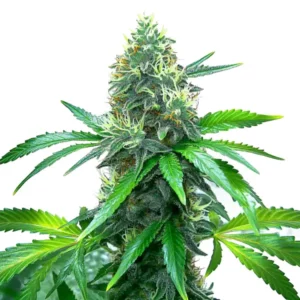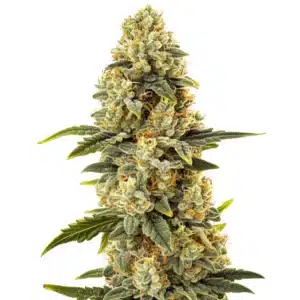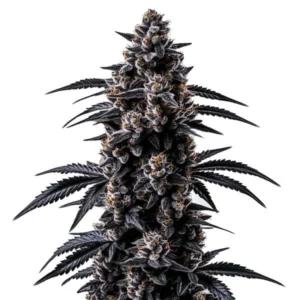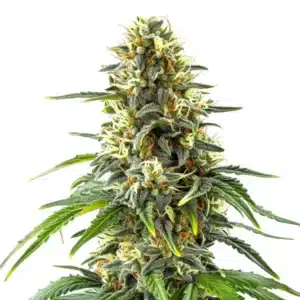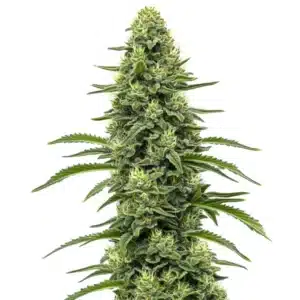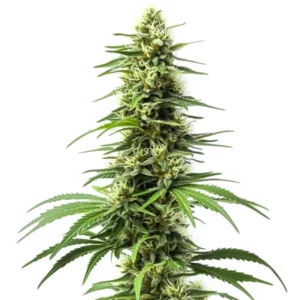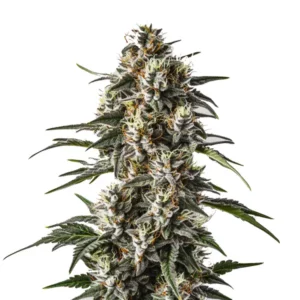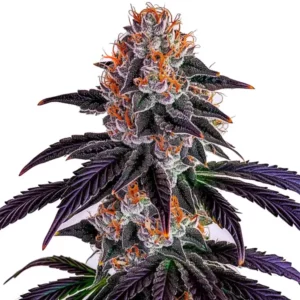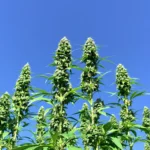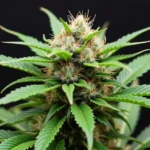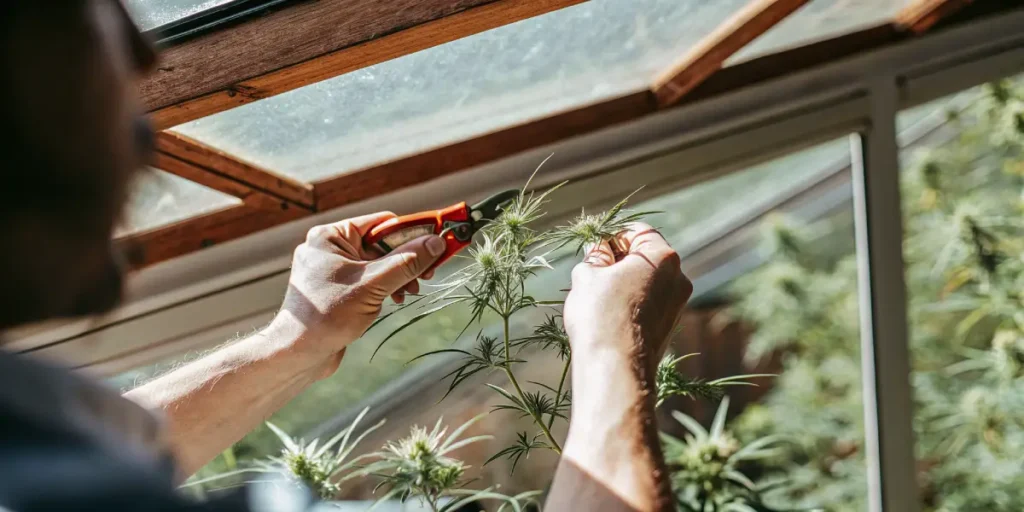
Cannabis Pruning Techniques for Bigger Buds
Getting bigger buds from your cannabis plants requires the right pruning techniques. This process involves carefully removing parts of the plant to direct energy toward bud growth. By focusing on cannabis pruning techniques for bigger buds, you can achieve a more bountiful harvest. The key is understanding how to trim without stressing your plants.
When tackling cannabis pruning for larger yields, it’s essential to know the plant’s growth stages. Pruning at the right time can significantly impact the size and quality of your buds. For instance, strains like Gorilla Glue 4 from Blimburn Seeds are known for their robust growth and respond well to thoughtful trimming.
Recommended Strains
Regular pruning helps increase airflow and light penetration to lower parts of the plant. This can effectively enhance the bud size and overall plant health. The focus should be on creating a balance where the plant can focus its resources on producing larger, denser buds rather than maintaining unnecessary foliage.
Types of Cannabis Pruning Techniques
There are several pruning methods that can help improve your cannabis yield. One popular technique is topping, which involves cutting the main stem to encourage the plant to grow two new branches. This method is effective in controlling height and increasing the number of buds.
Fimming is another method where you cut 75% of the tip of the plant. Unlike topping, fimming doesn’t remove the entire tip, which can lead to bushier growth. Both techniques help in increasing bud size through cannabis pruning, making them favorites among growers.
Knowing the nuances between different cannabis pruning techniques for bigger buds is essential. Each method has its advantages, and choosing the right one depends on the specific characteristics of your strain and growing environment. Experimentation and observation will guide you in refining your approach over time.
Another technique worth exploring is lollipopping, which involves removing lower branches that do not receive adequate light. This directs the plant’s energy toward the upper buds, maximizing their growth potential. By integrating these effective pruning strategies for cannabis growth, you can optimize your plant’s productivity.
Topping for Better Buds
Topping is especially useful for strains like OG Kush from Blimburn Seeds, where controlling the plant’s height can lead to a more manageable and fruitful grow. By cutting the main stem above a node, you encourage the plant to produce multiple colas, resulting in more bud sites.
This method should be done during the vegetative stage when the plant is actively growing. It’s crucial to use clean, sharp scissors to avoid damaging the plant tissue. A well-topped plant will recover quickly and soon show signs of new growth, leading to a potentially larger harvest.
Incorporating topping as part of your cannabis plant trimming for bigger harvests strategy can result in more uniform growth. This technique not only influences the size of the buds but also their overall quality by ensuring consistent nutrient distribution. It’s a tried-and-true method among experienced growers.
Regularly practicing topping can transform the way your plants develop, enhancing the overall structure and support for the eventual weight of your buds. This method, combined with other best pruning methods for cannabis plants, lays the groundwork for a robust and rewarding cultivation cycle.
Fimming for Enhanced Growth
Fimming is slightly less aggressive than topping and can be done at the same stage. It’s a technique that encourages bushier growth, which can be beneficial for certain strains. By cutting only 75% of the tip, fimming allows for multiple new branches to emerge.
Strains like Blue Dream from Blimburn Seeds often benefit from fimming due to their natural growth patterns. The result is a wider plant with more potential bud sites, which can lead to larger yields when done correctly.
Fimming can be particularly advantageous in optimizing your grow space, as it tends to create a fuller canopy. This method of cannabis pruning for larger yields allows more light to reach the interior bud sites, significantly boosting their development and density.
The flexibility of fimming as a technique means it can be tailored to fit different growing conditions and plant responses. By knowing how your plants react, you can refine your approach to increase bud size through cannabis pruning, achieving greater yields and quality.
Defoliation for Light Penetration
Defoliation involves removing leaves that block light from reaching the lower parts of the plant. This is particularly effective in improving the bud size of lower branches. By removing fan leaves that overshadow buds, you ensure better light distribution throughout the plant.
This method should be applied carefully, as excessive defoliation can stress the plant. Start by removing only a few leaves at a time and observe how your plant reacts. This technique is especially beneficial during the flowering stage when light exposure is critical.
Effective defoliation as part of cannabis pruning techniques for bigger buds can also enhance airflow, reducing the risk of mold and pests. By strategically thinning out foliage, you create an environment that supports healthy bud development and robust plant growth.
Combining defoliation with other pruning methods can further amplify your results. This holistic approach to cannabis plant trimming for bigger harvests ensures that each part of the plant receives adequate resources, contributing to a successful and bountiful harvest.
Promos & Deals
When to Prune Your Cannabis Plants
Timing is crucial when it comes to pruning cannabis plants. The vegetative stage is the ideal time for most pruning activities, as the plant is in a growth phase and can quickly recover from cuts. Early pruning can set the foundation for larger yields down the line.
During the flowering stage, pruning should be minimal. Focus on removing any diseased or dead leaves to keep the plant healthy. At this stage, the plant needs all its energy for bud production, so avoid major cuts that could stress it.
Knowing the growth cycle of your cannabis plants is essential for implementing the best pruning methods for cannabis plants. By aligning your pruning efforts with the plant’s natural growth phases, you can maximize its potential for larger and more potent buds.
Incorporating effective pruning strategies for cannabis growth requires careful planning and observation. Keep track of how each strain responds to different techniques and adjust your timing accordingly to achieve the best results.
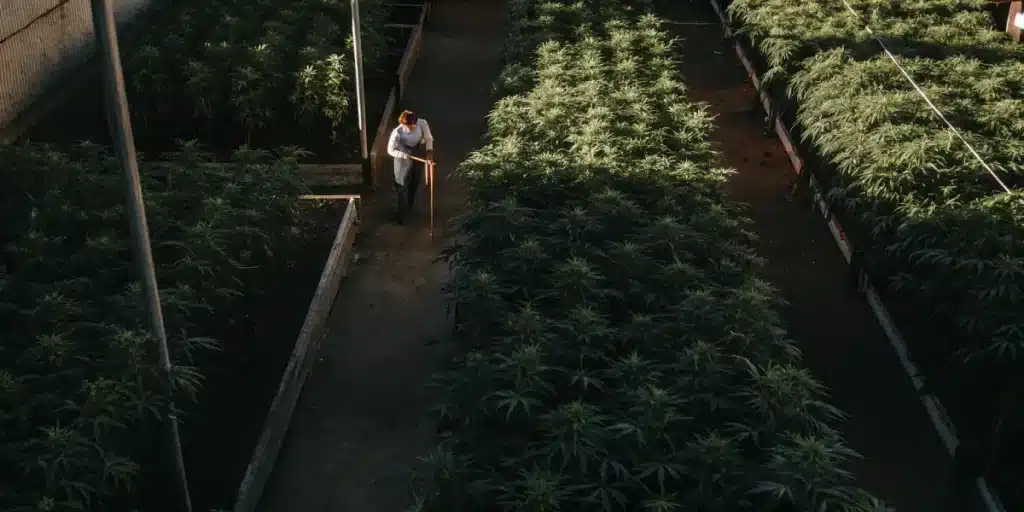
Vegetative Stage Pruning
In the vegetative stage, your plant is focused on growing leaves and branches. This is the best time to apply topping or fimming techniques. By shaping the plant early, you set the stage for a more productive flowering period.
For first-time growers, it’s essential to monitor the plant’s response to pruning. Look for signs of stress such as drooping or yellowing leaves and adjust your strategy accordingly. Patience and observation are key in mastering the best pruning methods for cannabis plants.
The vegetative stage is an opportunity to build a strong plant foundation. By optimizing your pruning techniques during this period, you encourage a robust structure capable of supporting heavy buds, synonymous with successful cannabis pruning for larger yields.
Regular assessment and adaptation of your pruning methods during this stage will ensure your plants are well-prepared for the flowering phase. This proactive approach results in healthier plants and sets the tone for an impressive harvest.
Flowering Stage Pruning
Once your plant enters the flowering stage, the focus shifts from growth to bud production. Pruning during this stage should be minimal, concentrating on maintaining plant health. Remove yellowing leaves or any that appear to be diseased.
Careful defoliation can still be beneficial, especially if large fan leaves are blocking bud sites. However, be cautious not to over-prune as the plant is less resilient to stress during this stage. The objective is to support the plant in channeling its energy toward producing larger buds.
During the flowering stage, every decision impacts the final yield. Pruning should be strategic, aiming to enhance light penetration and airflow without causing undue stress. This balance is crucial for cannabis pruning techniques for bigger buds.
Maintaining a keen eye on your plants’ health and environmental conditions during flowering ensures that your earlier efforts pay off. This stage is where your effective pruning strategies for cannabis growth culminate in a successful and bountiful harvest.
Post-Harvest Pruning
After harvesting, post-pruning can help prepare your plant for future growth cycles. This involves cleaning up the plant by removing remaining leaves and any dead material. It’s an essential step for maintaining plant health and preventing disease.
This is also a good time to assess the effectiveness of your pruning strategy. Take note of what worked and what didn’t, and apply those lessons to your next grow. Continuous learning and adaptation are vital in the pursuit of cannabis plant trimming for bigger harvests.
Post-harvest pruning also allows you to reflect on the season’s successes and challenges. By evaluating each strain’s response to your cannabis pruning techniques for bigger buds, you can refine your approach for even better results in future grows.
Documenting your experiences and outcomes helps build a knowledge base that enhances your ability to make informed decisions. This ongoing refinement is key to mastering cannabis pruning for larger yields and achieving consistent, high-quality harvests.
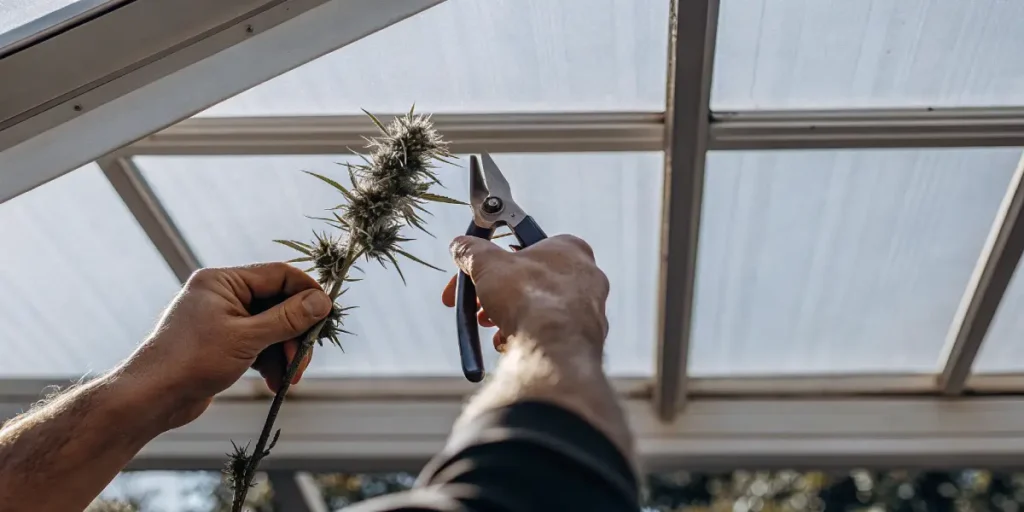
FAQs
What are the benefits of cannabis pruning?
Cannabis pruning helps direct the plant’s energy towards bud production rather than maintaining unnecessary foliage. This can lead to larger, denser buds and an increased overall yield. Additionally, pruning improves light penetration and airflow, which are crucial for healthy plant growth.
By applying effective pruning strategies for cannabis growth, you can also reduce the risk of mold and pests. A well-pruned plant is more robust and better equipped to handle environmental stresses. This makes pruning an essential part of any successful cannabis cultivation plan.
Another significant benefit of cannabis pruning techniques for bigger buds is the enhanced quality of the final product. By maximizing the plant’s potential during its growth cycle, you ensure a more potent and flavorful harvest.
Ultimately, pruning is a proactive measure that contributes to the plant’s overall vitality and productivity. Embracing these techniques can transform your cultivation experience and lead to consistently rewarding outcomes.
When should I start pruning my cannabis plants?
The ideal time to start pruning is during the vegetative stage. At this stage, the plant is actively growing and can quickly recover from cuts. Early pruning helps shape the plant and sets the foundation for a more productive flowering period.
Once the plant enters the flowering stage, pruning should be more conservative. Focus on maintaining plant health by removing any diseased or dead leaves. This ensures that the plant can concentrate its energy on developing larger buds.
Starting your pruning efforts early allows you to influence the plant’s growth pattern significantly. By aligning your techniques with the plant’s natural development, you lay the groundwork for cannabis pruning for larger yields.
Regularly observing your plants and adjusting your approach as needed will enable you to optimize your pruning strategy. This attentiveness ensures that your efforts align with the plant’s needs, maximizing its potential for producing bigger buds.
Can pruning stress my cannabis plants?
Pruning can cause stress if not done correctly. It’s important to use clean, sharp tools and avoid removing too much foliage at once. Start with small cuts and observe how your plant reacts before making further adjustments.
By applying cannabis pruning techniques for bigger buds carefully, you minimize the risk of stress. A well-pruned plant will recover quickly and benefit from increased bud production and improved health.
Knowing the plant’s growth stage and condition is crucial to minimizing stress. By tailoring your pruning approach to the specific needs of each plant, you ensure that they remain healthy and productive throughout the growth cycle.
Properly managing stress through thoughtful pruning contributes to the plant’s overall resilience. This balance is essential for achieving the best possible outcomes in your cannabis cultivation efforts.
What is the difference between topping and fimming?
Topping involves cutting the main stem to encourage the plant to grow two new branches, resulting in more bud sites. This method is effective for controlling plant height and increasing yields.
Fimming, on the other hand, involves cutting 75% of the tip. This leads to bushier growth and can result in multiple new branches. Both techniques help increase bud size through cannabis pruning, but they achieve it in slightly different ways.
Each method offers unique advantages, and the choice between them depends on your specific goals and the characteristics of your plants. By understanding the differences, you can apply the best pruning methods for cannabis plants to suit your needs.
Experimenting with both topping and fimming can provide valuable insights into how each technique affects your strains. By refining your approach, you can maximize your harvest potential through strategic pruning decisions.
How do I know if my pruning is effective?
Effective pruning is evident in the plant’s overall health and bud production. A well-pruned plant will have a strong structure and larger, denser buds. Regular observation and adjustment are key to ensuring your pruning strategy is successful.
Keep track of how your plants respond to different techniques. Strains like Gorilla Glue 4, OG Kush, or Blue Dream from Blimburn Seeds can serve as benchmarks for evaluating your pruning efforts. This ongoing process of learning and refining will lead to better results over time.
Analyzing the outcomes of your pruning efforts will help you identify which techniques yield the best results. This insight allows you to continuously improve your cannabis pruning techniques for bigger buds, achieving more consistent and impressive harvests.
Effective pruning is a dynamic process that involves constant learning and adaptation. By staying informed and open to new methods, you ensure that your cultivation practices remain at the forefront of cannabis growing techniques.



